“Goddess Durga represents the power of the Supreme Being that preserves moral order and righteousness in the creation. The Sanskrit word Durga means a fort or a place that is protected, and thus difficult to reach. Durga, also called Divine Mother, protects mankind from evil and misery by destroying evil forces such as selfishness, jealousy, prejudice, hatred, anger, and ego.
The worship of Goddess Durga is very popular among Hindus. She is also called by many other names, such as Parvati, Ambika, and Kali in the form of Parvati. She is known as the divine spouse of Lord Shiva and is the mother of Her two sons, Ganesha and Karttikeya, and daughter Jyoti. There are many temples dedicated to Durga’s worship in India.”
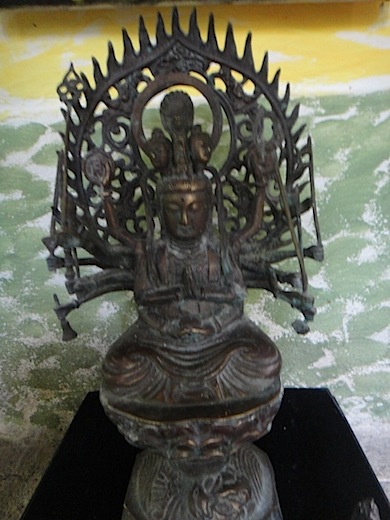
I’ve been taking photos of my living room (they call it a salon, here, but in reality, it’s kind of a patio) to post as the next step in my House Tour, but every time i take photos, i see things that i want to repair, upgrade or organise before I post pictures of the space. Like my bronze Goddess Durga Statue. I found this piece about three lifetimes ago in a second hand shop in San Francisco, and fell in love with her. I have carried her around with me ever since. I don’t think I ever really cleaned her … and I can’t remember that she ever really needed it when we lived in Calgary … but she has definitely taken on a grungy look (above photo was taken after washing with mild soap and water, which did absolutely nothing to make it look better).
Anyway, I had no idea how to clean bronze, and I didn’t want to inadvertently ruin the metal, so I googled it and discovered that one of the best cleaners (especially if you are looking for a natural cleaner) is baking soda and lemon. Great! I have tons of lemons and these little bags of baking soda.
So I squeezed 4 lemons. mixed in an envelope of baking soda, waited for it to stop fizzing, and smeared it all over the main part of the statue with an old toothbrush.
I washed off the residue and let it dry … and it looked terrible … all covered in a white powder … (I didn’t even get any photos).
So I got another bowl of pure lemon juice, and started cleaning with the toothbrush again.
The next time I rinsed it and let it dry off, it was definitely looking cleaner and shinier.
—
I also tried wrapping a cleaning rag around the end of the toothbrush, and that was very effective at removing the blackness …
At about this time, as part of my ongoing research, I read that there is another school of thought around cleaning bronze statues … that the black and green “patina” are part of the art, and that it takes many years to build up an authentic “patina”. Of course I started second-guessing my decision to clean the Goddess, but by now i was well over half way through and on the third day of the process, and I decided that it was too late to turn back … i had to finish it all.
—
In the end, I kinda compromised, and left the background parts of the piece a little darker (i.e. with a little more of the patina and less work :-)).
I also read that this present state can be maintained with a coat of good wax … which i will have to look for. This jungle heat and humidity is hard on everything, and I can imagine that it will get green again in no time at all … everything here turns green … just look around the base of the statue.
—
Meanwhile, I have put her back into her place of honour, front and centre in my home … and on her own special pedestal. The pedestal was one of those serendipitous finds at the Paca just at the moment that i needed it. Everything about it is perfect for this spot, bringing in some black to balance with the piece of original art above. It’s surface is a fungus-resistant, super-cleanable soft velvety fabric, and it is just the right size and style to suit the Goddess.
(Sorry about the off-balance photos … the viewfinder on my camera went all weird the other day and I have to guess where the camera is pointing)
Before …. and … After
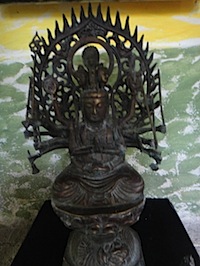
..
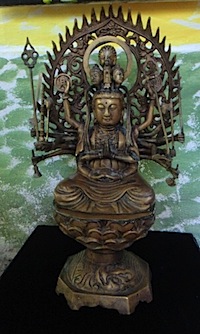
So … what do you think .. does she look better?
Ooops … I forgot one thing. Did you notice that the Goddess is missing her Bindi?
A bindi (Hindi: बिंदी, from Sanskrit bindu, meaning “a drop, small particle, dot”), or a pottu/bottu (in Tamil, -Bottu in Telugu, and Malayalam) is a forehead decoration worn in South Asia. Traditionally it is a bright dot of red color applied in the center of the forehead close to the eyebrows, but it can also consist of a sign or piece of jewelry worn at this location.
According to followers of Hinduism, this chakra is the exit point for kundalini energy. The bindi is said to retain energy and strengthen concentration.[1] It is also said to protect against demons or bad luck. The bindi also represents the third eye.[2] It is also used in festivals such as Holi.[3]
She originally had a bindi that disappeared sometime during her last moves, and I’ve always intended on replacing it. I have a variety of pretty nail art stones, so I found the best size and colour and glued it in place. Done! I think she likes it.
What do you think? Does she look happier after the cleaning? Does she lose authenticity without her patina? Do you have any experience of cleaning interior bronze pieces?

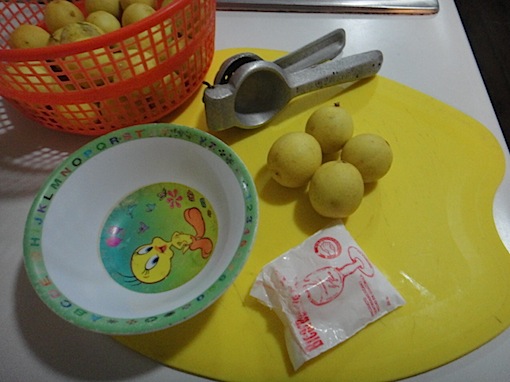
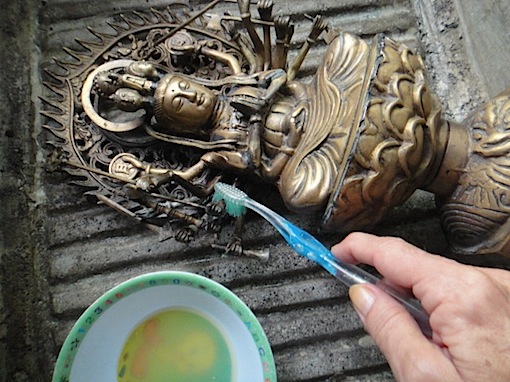
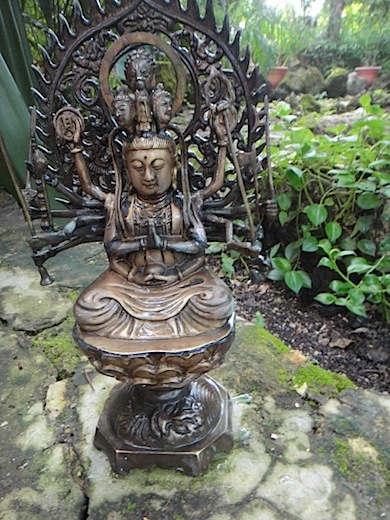
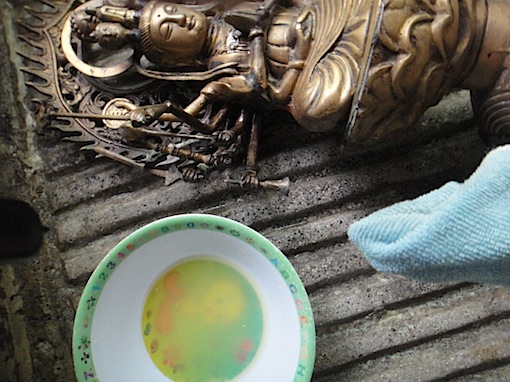
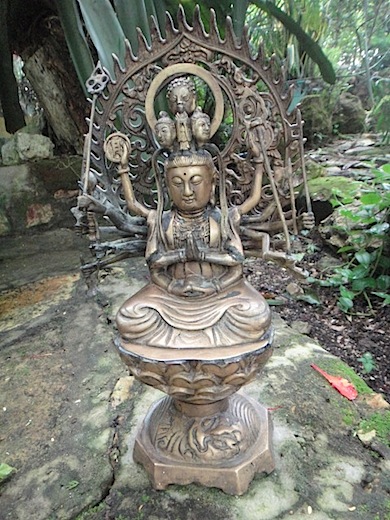
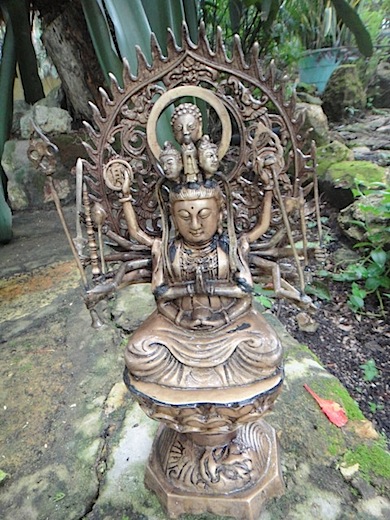

 ..
.. 
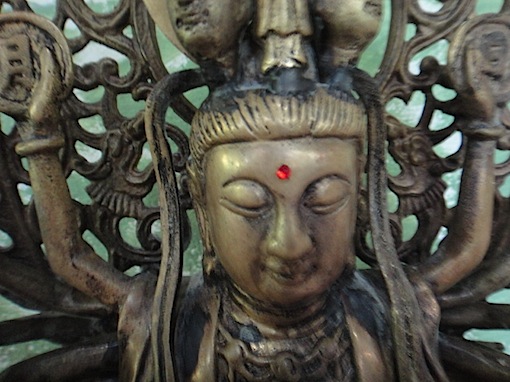
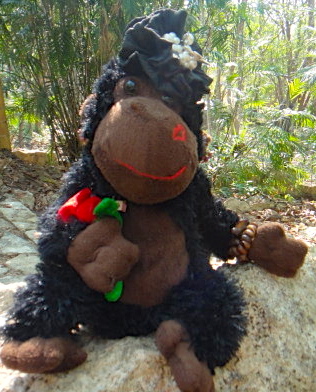
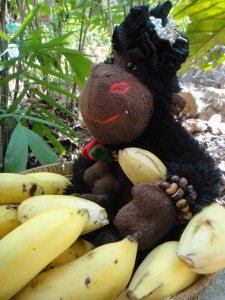
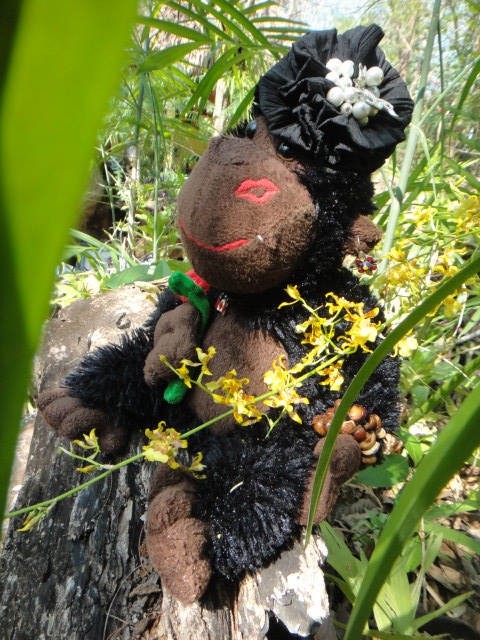
Leave a Reply